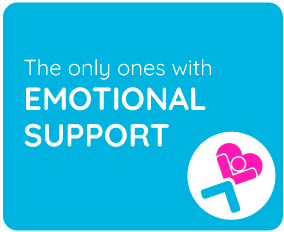
Schengen Area Travel Assistance
Schengen Area Travel Assistance from Botswana
Quote my travel assistance for Schengen
The Schengen Area, also known as the Schengen Zone, is the free movement region that includes 29 European countries that have eliminated border controls at their common borders. This area was established in 1985 through the Schengen Agreement and began operating in 1995 with the purpose of removing internal borders between member states and applying common controls at the external borders of these countries. In practice, the Schengen Area acts, in terms of migration, as a single country with a common visa policy.
Do not confuse the Schengen Area with the European Union. There are EU member states that are not part of the area, and similarly, countries that are not EU members are part of the Schengen Area.
What is Schengen Travel Insurance?
Schengen travel insurance is medical insurance that meets the requirements set by the European Council for obtaining a Schengen visa. This policy covers medical expenses and other unforeseen events that may occur during a trip within the area, such as emergency medical treatment or any expense related to repatriation for health reasons.
In March 2004, the European Union decided to introduce mandatory medical insurance for the issuance of a short-term stay visa in the Schengen Area. This is because the countries in the area require that travelers applying for the visa do not have to rely on public medical care during their stay.
Who needs a Schengen visa?
European authorities have established visa waiver agreements with several countries. Therefore, we can say that some countries require a visa to enter the Schengen Area, while others do not.
In this file, you will find the complete list of countries that need a Schengen visa.
Which countries are part of the Schengen Area?
The Schengen Area is formed by 29 European member states that carry out a common border and visa policy. Therefore, these countries are subject to the same visa regulations, which are set out in the Common Visa Code, EU Regulation 810/2009/EC.
The Schengen Area is composed of 29 countries:
- Austria
- Bélgica
- Bulgaria
- Croacia
- Chequia (República Checa)
- Dinamarca
- Estonia
- Finlandia
- Francia
- Alemania
- Grecia
- Hungría
- Islandia
- Italia
- Letonia
- Liechtenstein
- Lituania
- Luxemburgo
- Malta
- Países Bajos
- Noruega
- Polonia
- Portugal
- Rumanía
- Eslovaquia
- Eslovenia
- España
- Suecia
- Suiza
It is important to note that Bulgaria and Romania partially joined the Schengen Area on March 31, 2024, allowing transit without border controls only by air and sea, while controls at land borders still persist.
Is it possible to leave the Schengen Area and re-enter?
It is possible to leave the Schengen Area and re-enter, but there are certain rules and limitations to keep in mind. Travelers who are not citizens of a Schengen country can enter and stay in the Schengen Area for up to 90 days within a 180-day period without a specific visa, as long as they meet the entry conditions.
Main considerations:
90/180-day period: Visitors can stay up to 90 days in any 180-day period. This means that after staying 90 days in the Schengen Area, they must leave and cannot return until another 90 days have passed outside the Schengen Area. Border controls: When leaving the Schengen Area and then re-entering, it is crucial that travelers ensure their passports are properly stamped both at exit and entry. This helps authorities verify that they have not exceeded the stay limits. Multiple-entry visas: If a visa is required, some visas allow multiple entries into the Schengen Area during their validity period. This facilitates exit and re-entry without the need to obtain a new visa for each trip. It is recommended that travelers check the specific rules for their particular situation with the embassy or consulate of the Schengen country they plan to visit, as there may be variations depending on the traveler's country of origin and specific diplomatic relations.
What does travel insurance for a Schengen visa cover?
Travel insurance for a Schengen visa offers several essential coverages for travelers. Below are the main areas of coverage:
1. Medical Assistance:
- Medical expenses coverage: Covers necessary medical expenses as a result of illness or accident during the trip. This includes hospitalization, medical consultations, treatments, and medications, generally up to a limit of 30,000 euros, which is the minimum required by Schengen regulations.
- 24-hour assistance: Access to professional assistance and advice 24 hours a day in case of a medical emergency.
2. Repatriation:
- Medical repatriation: Covers transportation costs to the country of origin in case of serious illness or accident requiring medical attention at home.
- Repatriation in case of death: Covers costs associated with transporting the body to the country of origin in case of death.
3. Extraordinary expenses:
- Emergency expenses: Reimburses additional expenses incurred due to emergency situations, such as additional travel or accommodation expenses in case of delays or cancellations.
4. Dental expenses:
- Emergency dental coverage: Covers necessary dental expenses as a result of an accident.
5. Theft and loss:
- Document theft: Covers expenses related to the theft of travel documents, such as passports and visas.
- Baggage delay: Provides compensation in case of significant delay in baggage arrival. These coverages help ensure that travelers are protected against various eventualities while visiting the Schengen Area, meeting the requirements established for obtaining the visa.
What is the EES System?
The EES system, or Entry/Exit System, is a new system that will be implemented by the European Union starting October 6.
The EES system is designed to monitor non-EU citizens who need a visa for short stays, requiring compliance with new guidelines and linking to the ETIAS system. This advanced system captures and monitors the movements of non-EU travelers through fingerprint and digitized travel document records, collecting and disseminating data on admission, exit, and denial of entry to third-country nationals in the Schengen Area.
Replacing traditional passport stamps with biometric data, the EES allows authorities to monitor travelers' movements and alert about overstays or unauthorized entries by including fingerprints, personal data, and a facial photograph.
Countries like Switzerland, Liechtenstein, Norway, and Iceland are included in the system, while Ireland and Cyprus do not participate. The main objective is to strengthen border security and manage migration more effectively.
How to hire travel assistance for the Schengen Area?
With travel assistance for Schengen from Pax Assistance, you can travel throughout the area with the most comprehensive medical travel coverage, the highest protection, and 24-hour attention via WhatsApp. Hire now for your next destination and travel in peace.
Quoting is very simple: enter our quote tool, specify your country of residence, entry and exit dates, the region of the world you are traveling to, and the ages of the passengers. Done! In just a few steps, you will know your options.
Depending on the type of trip you are making, we have different services to suit your travel needs. More info at the following link: Which Pax service to hire depending on the trip you are making.
How much does travel assistance for the Schengen Area cost?
The cost of travel assistance for the Schengen Area can vary considerably depending on the duration of the trip, the traveler's age, the level of coverage, and the insurance company.
Factors that affect the cost:
Duration of the trip: A longer trip generally means a higher cost. Traveler's age: Premiums are usually higher for older travelers. Level of coverage: More extensive coverage with higher expense limits increases the cost. Specific destination: Although it is the Schengen Area, some countries may have specific requirements that affect the cost of insurance.
Why choose Pax Assistance?
At Pax Assistance, we are committed not only to providing you with human and accessible travel assistance but also to caring for your emotional well-being and that of your family.
We have Pax Cash, so you can say goodbye to reimbursements! When our medical team prescribes a medication, instead of having to pay out of pocket and then wait for a reimbursement, we will send you a link directly to your email or phone number. By clicking on the link, the amount needed for the purchase will be instantly credited to your virtual wallet, compatible with Apple or Android devices.
At Pax Assistance, we care about every aspect of your well-being, and our commitment goes beyond providing you with medical assistance and financial protection. We want you to feel at peace during your trip, knowing that we are here for you and your family, even in the most difficult moments.


